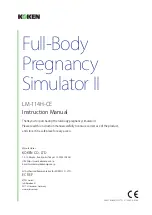
EXPERIMENT 21
46
Temperature
sensor
YOU WILL NEED
+ 1 resistor, 470 Ω
+ 1 resistor, 3.3 kΩ
+ 1 red LED
+ 2 transistor modules
+ 3 short wire bridges
+ battery clip
+ electronics board
+
and additional
household items: 9-volt
square battery, hair dryer,
cube of ice
+
–
9V
T2
T1
R 2
470 Ω
R 1
3.3 kΩ
LED 1
HERE’S HOW
1. Assemble the circuit, and then heat
transistor T1 with the hair dryer,
followed by transistor T2.
How does the LED react when you
heat the transistors?
2. Now for the cooling stage: First cool
down transistor T1 with the ice
cube, then transistor T2.
How does the LED react now?
When you heat transistor T1 with
the warm air, the LED gr
adually
becomes darker; but when you heat
T2, it gets brighter.
When you cool transistor T1 with an
ice cube, the LED gets brighter
. But
as soon as you cool T2, it gets
darker.
So you can influence the brightness
of the LED by changing the
temperatures of the transistors.
The temperature differences have
to be quite distinct, though —
otherwise this trick won
’t work.
That is why you need a hair dryer
for heating and a piece of ice for
cooling them.
As in the previous experiment
, you
can use the red LED as well as the
green one for this experiment
.
C
WHAT’S HAPPENING?
R1
3.3 kΩ
R2
470 Ω
LED1
T1
+
–
T2
A
C
Summary of Contents for Electronics
Page 52: ...712 301 ...























